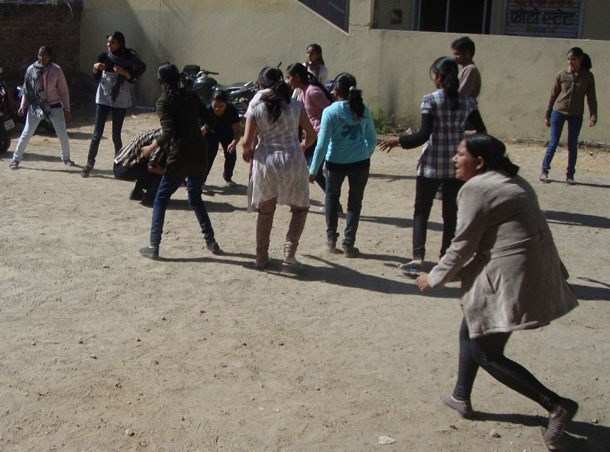Makar Sakranti Symbolizes Transition
The sweetness of a laddoo and gajjak prepared with til (sesame) for the essence of Makar Sakranti. Coupled with specially prepared kheech and the echoes of sitoliya, a traditional game played by keeping 7 stones one above the other and cracking the heap with ball and then arranging them again before the opponents hit anyone from the team with the ball, the occasion is enjoyed by all and sundry, especially the kids.

The sweetness of a laddoo and gajjak prepared with til (sesame) for the essence of Makar Sakranti.
Coupled with specially prepared kheech and the echoes of sitoliya, a traditional game played by keeping 7 stones one above the other and cracking the heap with ball and then arranging them again before the opponents hit anyone from the team with the ball, the occasion is enjoyed by all and sundry, especially the kids.
The celebration marks the northward shift of the sun, commencing the warmer and longer days in the northern hemisphere. Of the 12 stars of the Zodiac, the sun enters Capricon (Makar) and therefore the festival is known as Makar Sakranti, where Sakranti means transition.
The day is considered very auspicious as it marks the beginning of the harvest season and also ends the inauspicious phase of one month (Mal Maas) which starts in mid-December, when all the auspicious ceremonies come to a halt for one month and people eagerly wait for Makar Sankranti.
According to the Hindu beliefs, the day is considered very auspicious for giving alms to the poor, specially the women, engage themselves in these practices. As per custom, they give 13 items as alms on the day.
In Udaipur the day is dedicated to ‘Sitoliya and Maar Dhadhi; the two traditional games in which all the friends and family members participate enthusiastically. Though the competition is to hit the other players with a ball it enhances the bond of love and affection.
The festival, celebrated with joy and enthusiasm, is known by different names in different parts of the country. It is known as “Thai Pongal” in South India, “Tirmauri” in Sindhis and “Uttarayan” in Gujarat.
In Jaipur, the day is dedicated to kite flying and also in Gujarat, where it is celebrated with great joy and fervor, kite flying activity rules the day where all the family members can be seen outside to enjoy the colorful panorama in the sky.
Thus, the festival symbolizes new life after the chilling cold!!!
To join us on Facebook Click Here and Subscribe to UdaipurTimes Broadcast channels on GoogleNews | Telegram | Signal


